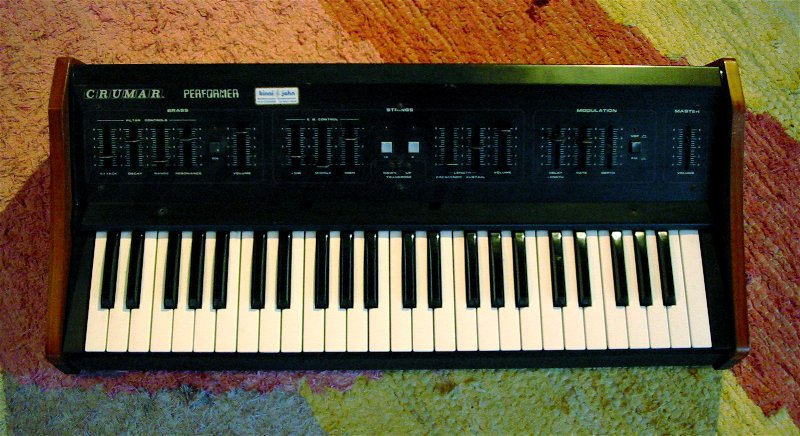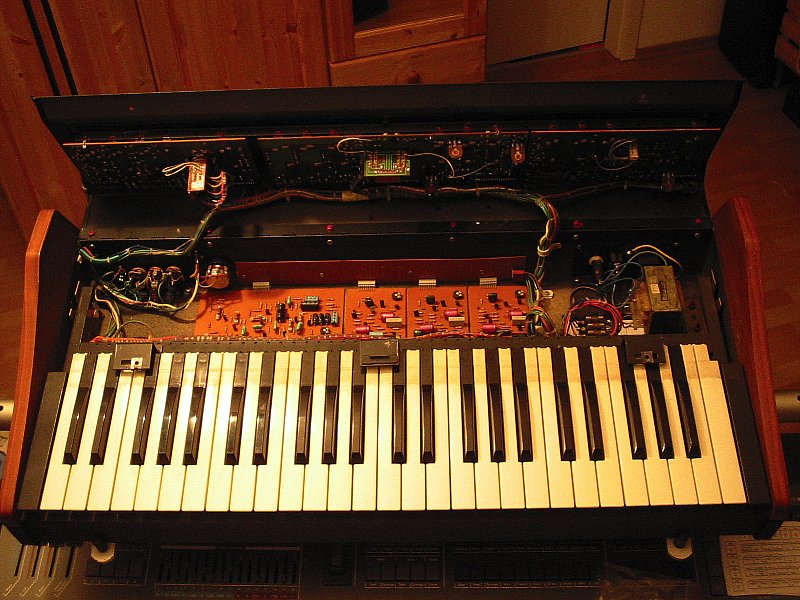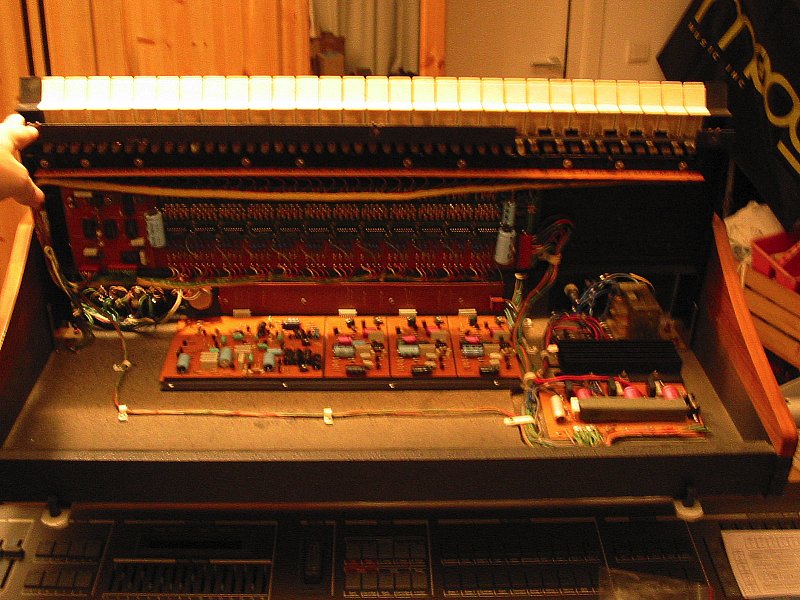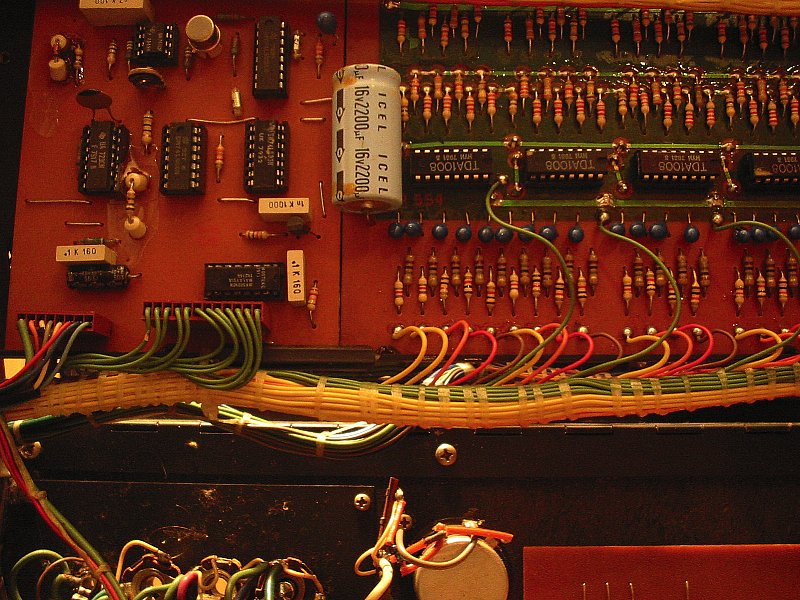Crumar Performer 

This is one of those many attempts by mainly Italian companies to build a polyphonic, affordable keyboard able to do synth sounds as well as strings. And this time the synth sound - actually it is the Brass Section - does not sound that weak at all. A paraphonic (means a single filter for all voices) sound created by an simple saw wave going through a lowpass filter with variable cut off ("RANGE") and RESONANCE. And the filter is also modulated in cutoff by a AD envelope. The only things left to say about this section on the left of the instrument is the ON switch and the volume fader for it.
In the middle we find the String Section. It is not sounding that cheasy at all. Although not that smooth and special as the famous other string machines from those second half of the seventies.
Here you find 16' and 8' push buttons to switch these two octaves on. A three band EQ to change the sound character a bit. And for some variation ofer time they included a Attack (labeled "Crescendo") and Sustain slider. And of cause a volume fader too. The little black switch under the register buttons is transposing the whole sounds UP or DOWN an octave. If you think of it as transposing all one octave up or one octave down is a matter of view. Ther is no zero. So you just transpose it up or down one octave from the other switch position.
The Modulation Section features controlls for a monophonic LFO that can be routed to modulate either the filter of the "Brass" or the pitch of both sections. A fader for DELAY LENGTH gives the single triggered delay function. That makes the vibrato not to start on the push of a key, but fade the vibrato slowly in during the length of a note. The RATE is changing this LFO's speed. And the DEPTH the max amount.
And then there is of cause the MASTER section ith the VOLUME controll over both audio generating sections.
In the back one find a MAIN OUT, a BRASS OUT and a SIGNAL out. The later is the un filtered "Brass" signal. Great to be used to feed into a synth with external signal in.
A 3.5 mm socket (the other are all 1/4" as usually) labeled GATE give a low not singel trigger S-trig. So this is great to hook up a Moog and feed in the SIGNAL into its filter.
Some sound examples as mono 44.1 kHz .wav files are here:
- Brass only (played monophonic here with differend slider settings (3.1 MB)
- Strings (first 8' then 16'. Then the EQ is changed while playing (4.3 MB)
- Both sections played together (3.1 MB)

Undo two screw on the front plate and you are able to flap the panel to the back. This is nice for service. You can see here the back of the front panel. On the very left upper board is the monophonic filter. But you just see the soldering side here.
In the bottom of the instrument you see the two modulatiom LFOs for the tripple chorus. This chorus is bild from the famous transistor bucket brigade chips TCA350 as on the other italian string machines. And you already spot the power supply and its internal fuses afer the transformer.

Here you see what was hidden under the keyboard:
- the power regualtions and AC to DC converters at the right
- the rather big board under the keys that do the division of the top octave (see below) for each note at all needed octaves.
- and finally the master oscillator and the top octave divider on the very right under the lowest 4 keys.

Here you see a close up of the master oscillator and the top octave divider.
The master oscillator is build up from the then very common 74LS221 by Fairchild and a IC741. This chip is exchangeable with the SN74LS221 by Texas Instruments.
The master clock is then divided by 2 by means of the 74LS93 and 74LS00 chip by Fairchild if the transpose switch is set to 16' (= -1 octave).
The top octave divider chip is also well known for organs and string machines from this time: the MK50240 by Motek. This chip divides down the the master oscillator that is running at a high frequency way beyond the human ears into 12 squarewaves at different frequency in the ratio of a 12 note equal tempered note scale. But this top octave is still high pitched, because it represents the highest notes playable by the instrument.
Each top octave note is then divided down 1, 2, 3, 4, and 5 octaves by one of the 12 TDA1008 chips you see on the right board. This board also changes the square wave by filtering it with a simple static RC-filter.
BTW: the IC µA723 on the left board generates the needed +5 volts from the +12 Volt power.